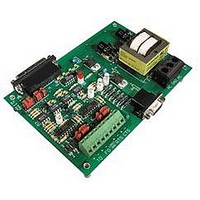AC7 OPTO 22, AC7 Datasheet - Page 36

AC7
Manufacturer Part Number
AC7
Description
Computers, Interface Cards
Manufacturer
OPTO 22
Specifications of AC7
Peak Reflow Compatible (260 C)
No
Leaded Process Compatible
No
Features
RS232 To RS422 Converter
Interface
RS-422⁄485
Module Type
Adapter Card
Mounting Type
Protective Enclosure
Voltage, Supply
115 VAC ± 10 VAC @ 50⁄60 Hz
Lead Free Status / RoHS Status
Contains lead / RoHS non-compliant
Available stocks
Company
Part Number
Manufacturer
Quantity
Price
Part Number:
AC713
Manufacturer:
ALPHA
Quantity:
20 000
Part Number:
AC7201-50JC
Manufacturer:
AMD
Quantity:
20 000
Part Number:
AC744
Manufacturer:
SKYWORKS/思佳讯
Quantity:
20 000
Company:
Part Number:
AC76951
Manufacturer:
ALPHA
Quantity:
5 510
Part Number:
AC7C4096B012TCN
Manufacturer:
ALLIANCE
Quantity:
20 000
ADDITIONAL TECHNICAL INFORMATION
36 AC7A/B User’s Guide
GLOSSARY OF TERMS
CTS – an abbreviation for Clear to Send. CTS is a response to the RTS signal. CTS is a signal received by
the computer. Basically, the CTS signal means that the other device received the Request to Send from the
computer, and now the other device is sending CTS to give permission to the computer to begin sending data.
DCD – an abbreviation for Data Carrier Detect. DCD is received by a computer from a modem. The modem
sends a DCD output when it has detected an analog carrier signal on its telephone line port which is carrying
digital data. DCD is an indication that the modem has a valid data connection with another modem at the
other end of the telephone line.
DCE – an abbreviation for Data Communications Equipment. This term is used to describe equipment that does
not create or use data, but instead only transports data. An example of Data Communication Equipment (DCE)
is a modem, which transports data over telephone lines. DCE devices usually have a female gender DB25 RS-232
connector on them. For ease in cabling, DCE devices are designed to connect with a straight-through RS-232
cable to DTE devices.
DSR – an abbreviation for Data Set Ready. DSR indicates to the computer that the modem is in a state of
readiness.
DTE – an abbreviation for Data Terminal Equipment. This term is used to describe equipment that creates or
uses data. An example of Data Terminal Equipment (DTE) is a computer. DTE devices usually have a male
gender DB25 RS-232 connector on them. For ease in cabling, DTE devices are designed to connect with a
straight-through RS-232 cable to DCE devices. If two DTE devices were to be connected together, an RS-232
null modem cable would have to be used.
DTR – an abbreviation for Data Terminal Ready. This is an output from the computer and it means that the
computer is powered up, and ready to communicate with another device.
GND – an abbreviation for Ground or Logic Ground.
RD – an abbreviation for Receive Data. Also sometimes shown as RX or RXD. This is the pin on a serial
communication port where data is received from other devices.
RS-232 – a computer interface standard that supports one device at each end of the RS-232 cable (two devices
total). RS-232 in its simplest form uses three wires: a transmit wire, a receive wire, and a signal ground wire.
Note that the same ground is used for transmit and receive.
RS-422 – a computer interface standard that supports a single transmitter and one or more receivers on a
single twisted-pair cable. RS-422 uses a twisted-pair cable and both wires are isolated from ground. The data
signal is represented as the difference in voltage between the two wires, instead of being referenced to ground.
The fact that RS-422 is differential-based, instead of ground-based, makes it much more immune to noise,
and allows longer cable lengths.
RS-485 – a computer interface standard that supports multiple transmitters and multiple receivers on a single
twisted-pair cable. RS-485 uses a twisted pair cable and both wires are isolated from ground. The data signal is
represented as the difference in voltage between the two wires, instead of being referenced to ground. The fact
that RS-485 is differential-based, instead of ground-based, makes it much more immune to noise, and allows
longer cable lengths.
RTS – an abbreviation for Request to Send. RTS is a signal sent by the computer to tell the other device that
the computer wants to send data to the other device.
TD – an abbreviation for Transmit Data. Also sometimes shown as TX or TXD. This is the pin on a serial
communication port where data is sent out to other devices.

















